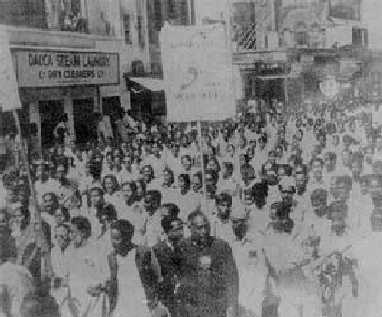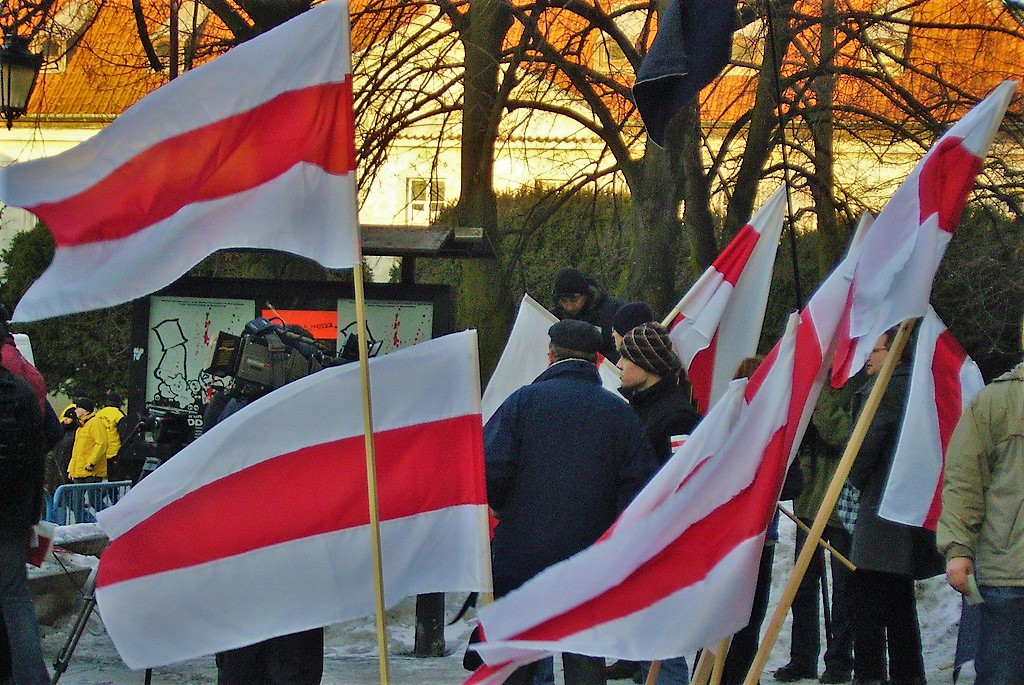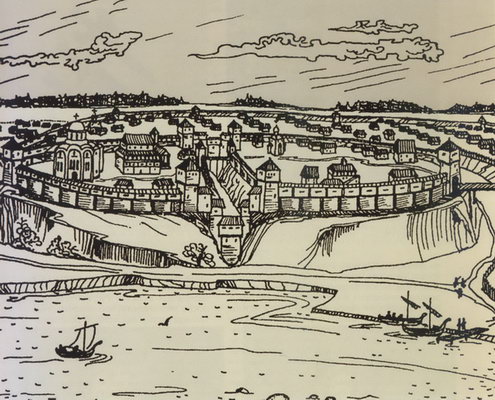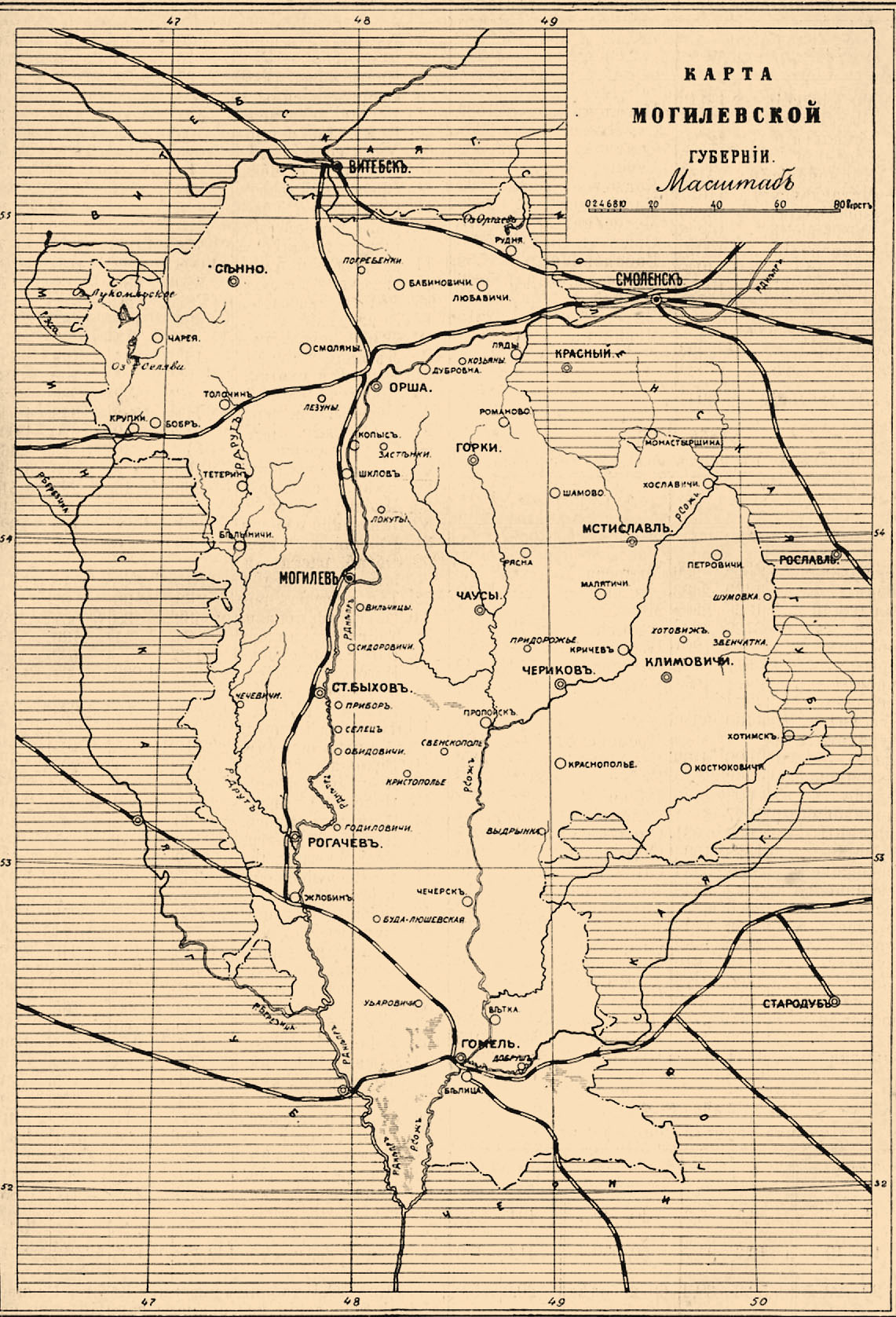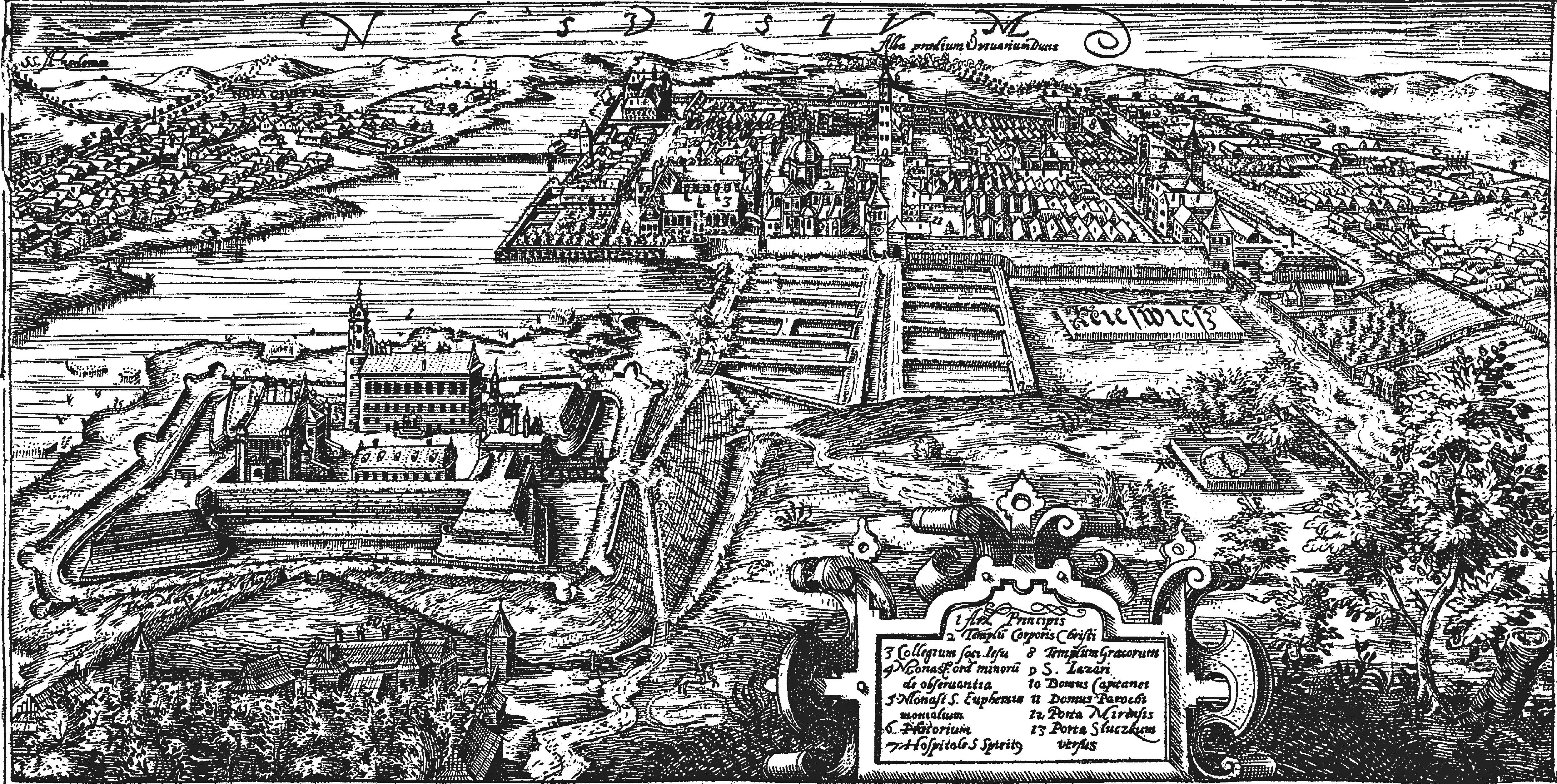|
Mova Nanova
Mova Nanova ( be, Мова Нанова, ''Mova Nanova'', literally, “language anew”) is a Belarusian course that has taken place in Minsk, the capital of Belarus, since January 13, 2014. It is a non-profit NGO, a cultural and linguistic initiative aimed at expanding the everyday use of the Belarusian language, which alongside Russian is one of the two official languages of Belarus. The lessons are held in the gallery of modern art «Ў». The initiative has caught on and has been acclaimed by other regional cities that support the endeavour locally – now the courses can be also found in Baranavičy, Hrodna, Babrujsk, Niasviž, Brest, Maladziečna, Mahilioŭ, Viciebsk and Homel. The undertaking has also expanded outside Belarus and has an affiliate group in Kraków. On 23 July 2021, Mova Nanova was forcibly disbanded by the Minsk district executive committee. Mova Nanova in Minsk has been set up and is hosted by Alesia Litvinouskaja, a linguist, and Gleb Labadzenka, a jour ... [...More Info...] [...Related Items...] OR: [Wikipedia] [Google] [Baidu] |
Minsk
Minsk ( be, Мінск ; russian: Минск) is the capital and the largest city of Belarus, located on the Svislach and the now subterranean Niamiha rivers. As the capital, Minsk has a special administrative status in Belarus and is the administrative centre of Minsk Region (voblast) and Minsk District (raion). As of January 2021, its population was 2 million, making Minsk the 11th most populous city in Europe. Minsk is one of the administrative capitals of the Commonwealth of Independent States (CIS) and the Eurasian Economic Union (EAEU). First documented in 1067, Minsk became the capital of the Principality of Minsk before being annexed by the Grand Duchy of Lithuania in 1242. It received town privileges in 1499. From 1569, it was the capital of the Minsk Voivodeship, an administrative division of the Polish–Lithuanian Commonwealth. It was part of a region annexed by the Russian Empire in 1793, as a consequence of the Second Partition of Poland. From 1919 to 1991, aft ... [...More Info...] [...Related Items...] OR: [Wikipedia] [Google] [Baidu] |
Maladzyechna
Maladzyechna ( be, Маладзе́чна, Maladziečna, ; russian: Молоде́чно, Molodechno; pl, Mołodeczno) is a city in the Minsk Region of Belarus, an administrative centre of the Maladzyechna District (and formerly of the Maladzyechna Voblast). It has 98,514 inhabitants (2006 estimate) and is located 72 km northwest of Minsk. Located on the Usha River, it has been a settlement since 1388 when it was part of the Grand Duchy of Lithuania. It was also home to the Cold War facility Maladzyechna air base. History The fortification on the right bank of the Uša was first mentioned in 1388, although it is probable it was erected even before that date. Rectangular earthworks with stone walls 3,5 metres high and 11 metres wide formed the basis of the future castles and military camps formed on that location. The town itself was first mentioned the following year in a document issued by Kaributas, Prince of Severian Novgorod, who on December 16 assured his tributary ... [...More Info...] [...Related Items...] OR: [Wikipedia] [Google] [Baidu] |
International Mother Language Day
International Mother Language Day is a worldwide annual observance held on 21 February to promote awareness of linguistic and cultural diversity and to promote multilingualism. First announced by UNESCO on 17 November 1999, it was formally recognized by the United Nations General Assembly with the adoption of UN resolution 56/262 in 2002. Mother Language Day is part of a broader initiative "to promote the preservation and protection of all languages used by peoples of the world" as adopted by the UN General Assembly on 16 May 2007 in UN resolution 61/266, which also established 2008 as the International Year of Languages. The idea to celebrate International Mother Language Day was the initiative of Bangladesh. In Bangladesh, 21 February is the anniversary of the day when the people of Bangladesh (then East Pakistan) fought for recognition for the Bangla language. It is also celebrated in West Bengal, India. History 21 February was declared to be the International Mother L ... [...More Info...] [...Related Items...] OR: [Wikipedia] [Google] [Baidu] |
Trasianka
Trasianka ( be, трасянка, ) refers to a mixed language, mixed form of speech in which Belarusian language, Belarusian and Russian language, Russian elements and structures alternate arbitrarily.Hentschel, Gerd Belarusian and Russian in the Mixed Speech of Belarus. In Besters-Dilger, J. et al. (eds.): “Congruence in Contact-Induced Language Change: Language Families, Typological Resemblance, and Perceived Similarity.” Berlin, Boston: De Gruyter, 2014, 93-121. There is a similar phenomenon in Ukraine, a Ukrainian language, Ukrainian–Russian language mixture, called surzhyk. Etymology In Belarusian the word literally means low quality hay, when indigent farmers mix (shake: , ) fresh grass/straw with the yesteryear's dried hay. The word acquired the second meaning ("language mixture of low quality") relatively recently, in the second half of the 1980s, when a series of publications in the literary newspaper criticized developments in the use of the Belarusian lang ... [...More Info...] [...Related Items...] OR: [Wikipedia] [Google] [Baidu] |
Human Rights In Belarus
The government of Belarus is criticized for its human rights violations and persecution of non-governmental organisations, independent journalists, national minorities, and opposition politicians. In a testimony to the United States Senate Committee on Foreign Relations, former United States Secretary of State Condoleezza Rice labeled Belarus as one of the world's six "outposts of tyranny". In response, the Belarusian government called the assessment "quite far from reality". During 2020 Belarusian presidential election and protests, the number of political prisoners recognized by Viasna Human Rights Centre rose dramatically to 1062 as of 16 February 2022. Several people died after the use of unlawful and abusive force (including firearms) by law enforcement officials during 2020 protests. According to Amnesty International, the authorities didn't investigate violations during protests but instead harassed those who challenged their version of events. In July 2021, the autho ... [...More Info...] [...Related Items...] OR: [Wikipedia] [Google] [Baidu] |
Gomel
Gomel (russian: Гомель, ) or Homiel ( be, Гомель, ) is the administrative centre of Gomel Region and the second-largest city in Belarus with 526,872 inhabitants (2015 census). Etymology There are at least six narratives of the origin of the city's name. The most plausible is that the name is derived from the name of the stream Homeyuk, which flowed into the river Sozh near the foot of the hill where the first settlement was founded. Names of other Belarusian cities are formed along these lines: for example, the name Minsk is derived from the river Menka, Polatsk from the river Palata, and Vitsebsk from the river Vitsba. The first appearance of the name, as "Gomy", dates from 1142. Up to the 16th century, the city was mentioned as Hom', Homye, Homiy, Homey, or Homyi. These forms are tentatively explained as derivatives of an unattested ''*gomŭ'' of uncertain meaning. The modern name for the city has been in use only since the 16th or 17th centuries. History Unde ... [...More Info...] [...Related Items...] OR: [Wikipedia] [Google] [Baidu] |
Vitebsk
Vitebsk or Viciebsk (russian: Витебск, ; be, Ві́цебск, ; , ''Vitebsk'', lt, Vitebskas, pl, Witebsk), is a city in Belarus. The capital of the Vitebsk Region, it has 366,299 inhabitants, making it the country's fourth-largest city. It is served by Vitebsk Vostochny Airport and Vitebsk Air Base. History Before 1945 Vitebsk developed from a river harbor where the Vićba River (Віцьба, from which it derives its name) flows into the larger Daugava River, Western Dvina, which is spanned in the city by the Kirov Bridge. Archaeological research indicates that Baltic tribes had settlements at the mouth of Vitba. In the 9th century, Slavic settlements of the tribal union of the Krivichs replaced them. According to the ''Chronicle of Michael Brigandine'' (1760), Princess Olga of Kiev founded Vitebsk (also recorded as Dbesk, Vidbesk, Videbsk, Vitepesk, or Vicibesk) in 974. Other versions give 947 or 914. Academician Boris Rybakov and historian Leonid Alekseyev ha ... [...More Info...] [...Related Items...] OR: [Wikipedia] [Google] [Baidu] |
Mogilev
Mogilev (russian: Могилёв, Mogilyov, ; yi, מאָלעוו, Molev, ) or Mahilyow ( be, Магілёў, Mahilioŭ, ) is a city in eastern Belarus, on the Dnieper River, about from the border with Russia's Smolensk Oblast and from the border with Russia's Bryansk Oblast. , its population was 360,918, up from an estimated 106,000 in 1956. It is the administrative centre of Mogilev Region and the third-largest city in Belarus. History The city was first mentioned in historical records in 1267. From the 14th century, it was part of the Grand Duchy of Lithuania, and since the Union of Lublin (1569), part of the Polish–Lithuanian Commonwealth, where it became known as ''Mohylew''. In the 16th-17th centuries, the city flourished as one of the main nodes of the east–west and north–south trading routes. In 1577, Polish King Stefan Batory granted it city rights under Magdeburg law. In 1654, the townsmen negotiated a treaty of surrender to the Russians peacefully, if ... [...More Info...] [...Related Items...] OR: [Wikipedia] [Google] [Baidu] |
Brest, Belarus
Brest ( be, Брэст / Берасьце, Bieraście, ; russian: Брест, ; uk, Берестя, Berestia; lt, Brasta; pl, Brześć; yi, בריסק, Brisk), formerly Brest-Litovsk (russian: Брест-Литовск, lit=Lithuanian Brest; be, links=no, translit=Berastze Litouski (Berastze), Берасце Літоўскі (Берасце); lt, links=no, Lietuvos Brasta; pl, links=no, Brześć Litewski, ), Brest-on-the-Bug ( pl, links=no, Brześć nad Bugiem), is a city (population 350,616 in 2019) in Belarus at the border with Poland opposite the Polish city of Terespol, where the Bug (river), Bug and Mukhavets rivers meet, making it a border town. It is the capital city of the Brest Region. Brest is a historical site for many cultures, as it hosted important historical events, such as the Union of Brest and Treaty of Brest-Litovsk. Furthermore, the Brest Fortress was recognized by the Soviet Union as a Hero Fortress in honour of the defense of Brest Fortress in Jun ... [...More Info...] [...Related Items...] OR: [Wikipedia] [Google] [Baidu] |
Belarus
Belarus,, , ; alternatively and formerly known as Byelorussia (from Russian ). officially the Republic of Belarus,; rus, Республика Беларусь, Respublika Belarus. is a landlocked country in Eastern Europe. It is bordered by Russia to the east and northeast, Ukraine to the south, Poland to the west, and Lithuania and Latvia to the northwest. Covering an area of and with a population of 9.4 million, Belarus is the List of European countries by area, 13th-largest and the List of European countries by population, 20th-most populous country in Europe. The country has a hemiboreal climate and is administratively divided into Regions of Belarus, seven regions. Minsk is the capital and List of cities and largest towns in Belarus, largest city. Until the 20th century, different states at various times controlled the lands of modern-day Belarus, including Kievan Rus', the Principality of Polotsk, the Grand Duchy of Lithuania, the Polish–Lithuanian Commonwealth, and t ... [...More Info...] [...Related Items...] OR: [Wikipedia] [Google] [Baidu] |
Nesvizh
Nesvizh, Niasviž ( be, Нясві́ж ; lt, Nesvyžius; pl, Nieśwież; russian: Не́свиж; yi, ניעסוויז; la, Nesvisium) is a city in Belarus. It is the administrative centre of the Nyasvizh District (''rajon'') of Minsk Region and site of Niasviž Castle, a World Heritage Site. Its 2009 population is 14,300. History Nesvizh was first documented in 1223. It was part of the Grand Duchy of Lithuania until 1793, but the Grand Duchy was part of the Polish–Lithuanian Commonwealth since 1569. In the 15th century, while still a minor town, it belonged to the Kiszka family and later to the Radziwiłł family, and remained the family's seat until 1813. In 1561 or 1562 Maciej Kawęczyński founded the print works of the Polish Brethren. The first Belarusian language book printed in Latin script, a catechism by Symon Budny, was published in Nesvizh in 1562. The ''Nieśwież Bible'' ('' Biblia nieświeska''), one of the oldest Polish translations of the Bible, also by ... [...More Info...] [...Related Items...] OR: [Wikipedia] [Google] [Baidu] |
Babruysk
Babruysk, Babrujsk or Bobruisk ( be, Бабруйск , Łacinka: , rus, Бобруйск, Bobrujsk, bɐˈbruɪ̯s̪k, yi, באָברויסק ) is a city in the Mogilev Region of eastern Belarus on the Berezina River. , its population was 209,675. The name Babrujsk (as well as that of the Babruyka River) probably originates from the Belarusian word (; 'beaver'), many of which used to inhabit the Berezina. However, beavers in the area had been almost eliminated by the end of the 19th century due to hunting and pollution. Babrujsk occupies an area of , and comprises over 450 streets whose combined length stretches for over . Babrujsk is located at the intersection of railroads to Asipovichy, Zhlobin, Aktsyabrski and roads to Minsk, Homyel, Mahilyow, Kalinkavichy, Slutsk, and Rahachow. It has the biggest timber mill in Belarus, and is also known for its chemical, machine building and metal-working industries. In 2021, there were 38 public schools in Babrujsk, with over 2 ... [...More Info...] [...Related Items...] OR: [Wikipedia] [Google] [Baidu] |


